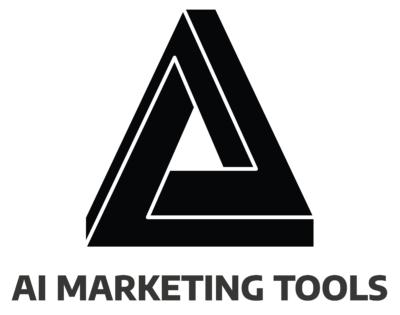
In today’s fast-paced business environment, many marketers wonder whether chatbots can outperform traditional customer service methods. This article will explore the strengths and weaknesses of both approaches, examining real-life case studies of chatbot implementation and comparing performance metrics. Readers will gain insights into the benefits of chatbots, including 24/7 availability and quick response times. By understanding the future trends in customer service automation, businesses can make informed decisions to enhance customer satisfaction and efficiency.
Key Takeaways
- Chatbots enhance efficiency by providing immediate responses and managing high volumes of inquiries
- Traditional customer service excels in personalization but often faces higher operational costs and wait times
- Implementing chatbots can streamline processes and improve customer satisfaction through quick resolutions
- Successful chatbot integration supports businesses in meeting evolving customer needs while optimizing expenses
- Continuous advancements in AI are shaping the future of customer service interactions and experiences
Understanding Traditional Customer Service Methods

Traditional customer service relies on various channels, such as phone support, email, and in-person assistance, each providing unique advantages. Human-led support excels in building rapport and handling complex inquiries, but it often faces challenges like long wait times and high operational costs. Understanding these strengths and challenges is crucial when evaluating how chatbots and traditional methods compare in today’s multichannel marketing landscape.
Overview of Traditional Customer Service Channels
Traditional customer service channels, such as phone support, email communication, and in-person assistance, are instrumental in enhancing customer engagement. Through these omnichannel approaches, businesses can cater to active users who appreciate the personal touch and direct interaction with representatives. As digital transformation continues to reshape industries, understanding how these methods function can help organizations better meet evolving customer needs while considering the potential role of advanced solutions such as chatbots and deep learning technology.
Key Strengths of Human-Led Support
Human-led support remains a key element in customer service due to its ability to address complexity and build strong client relationships. Representatives’ understanding and comprehensive knowledge base allow them to navigate intricate inquiries effectively, leading to higher customer satisfaction. With human interaction, businesses can also drive productivity by fostering loyalty through personalized experiences, setting them apart in the competitive landscape of email marketing and customer engagement.
Common Challenges Faced by Traditional Customer Service
Traditional customer service often encounters several challenges that impact its effectiveness. Long wait times can frustrate customers, making them less likely to engage in meaningful conversations. Additionally, reliance on decision trees can limit the ability of representatives to provide personalized assistance, leading to decreased satisfaction, especially when analytics reveal the need for swift, tailored responses.
Exploring Chatbots in Customer Service

Chatbots, designed to assist customers through automated interactions, are crucial in modern customer service. This section will explore the types of chatbots utilized in various settings, focusing on their functionality and benefits, including efficiency and compliance with general data protection regulations. Examining these aspects provides valuable insights into how enterprise software solutions streamline customer engagement and enhance database management on social media platforms.
Definition and Functionality of Chatbots
Chatbots are digital tools designed to facilitate automated communication with customers, enhancing service delivery without the direct involvement of human agents. Leveraging advances in speech recognition, these innovative systems can interpret customer inquiries in real time, providing quick responses that can significantly improve efficiency. Chatbots help brands strengthen customer relationships and build brand loyalty by fostering seamless interactions, demonstrating their growing importance in customer service.
Types of Chatbots Used in Customer Service
Various chatbots are used in customer service, each catering to different user needs and enhancing customer interactions. Rule-based chatbots follow a predetermined flow, relying on decision trees to guide users through common inquiries. In contrast, AI-driven chatbots leverage natural language understanding to dynamically interpret and respond to more complex questions. These advanced systems improve user satisfaction and aid organizations in effective data collection, allowing them to analyze customer behavior and preferences for better service delivery.
Benefits of Implementing Chatbots
Implementing chatbots in customer service delivers significant advantages that enhance overall digital marketing strategies. They can operate around the clock, ensuring prompt responses to inquiries and reducing wait times which directly boosts customer satisfaction. By providing a hybrid approach that combines automated efficiency with human oversight when needed, brands can optimize their service while also utilizing drag and drop interfaces for effortless setup and management.
- 24/7 availability for instant responses
- Improved customer satisfaction through quick resolutions
- Hybrid model for seamless human interaction
- User-friendly drag and drop interfaces for easy implementation
Performance Comparison: Chatbots vs Traditional Service

The comparison between chatbots and traditional customer service methods hinges on several key factors. First, response times and efficiency are vital in determining consumer satisfaction. Research indicates that metrics such as customer satisfaction and sentiment analysis reveal preferences for faster support. Additionally, chatbots excel in handling high volumes and scalability, while traditional methods often struggle. Finally, a cost-effectiveness analysis shows how leveraging large language model technology in chatbot solutions may offer significant savings.
Response Times and Efficiency
When evaluating the response times and efficiency of chatbots versus traditional customer service, chatbots demonstrate a clear advantage, particularly in the context of online shopping. With their ability to provide immediate support through multimodal interaction, chatbots can quickly address customer inquiries, reducing the need for long wait times often seen with human representatives. Although some users may have a learning curve, the instant responses and lower operational costs associated with chatbots typically result in a more favorable price for businesses, making them an effective solution for managing customer attention and engagement.
Customer Satisfaction Metrics
Customer satisfaction metrics are essential for evaluating the effectiveness of chatbots and traditional customer support methods. Businesses incorporating virtual assistants often find that improved operational efficiency leads to enhanced client loyalty. By assessing metrics like response time, resolution rates, and overall customer experiences, companies can refine their marketing strategy and ensure they meet customer expectations, ultimately driving greater satisfaction and retention.
Handling Volume and Scalability
Handling volume and scalability remains critical, where chatbots significantly outshine traditional customer service methods. With the integration of machine learning technologies, such as IBM Watson, chatbots efficiently manage thousands of customer inquiries simultaneously, ensuring no query goes unanswered. This automation allows businesses to seamlessly scale their operations, reducing the need for constant human oversight while providing a streamlined process for handover to human agents when complex issues arise.
Cost-Effectiveness Analysis
Cost-effectiveness is a key factor in comparing chatbots and traditional customer service methods. Using machine learning and interactive voice response systems, Chatbots can significantly reduce operational costs by handling large volumes of inquiries simultaneously without needing a large workforce. For example, companies like Zendesk illustrate how integrating chatbots into customer service strategies enhances scalability and allows businesses to maintain quality service while optimizing expenses associated with human representatives.
- Cost savings through reduced workforce requirements
- Increased scalability for handling multiple inquiries
- Integration of interactive voice response for efficient communication
- Enhanced customer service strategy with chatbot technology
Top Chatbot Platforms for Customer Service

Leading chatbot platforms offer key features that enhance user experience through efficient information retrieval and practical intelligence. Their pricing models and accessibility make them appealing for businesses of all sizes. Moreover, integration with existing systems is crucial for achieving seamless communication while ensuring data security. Understanding these aspects will help organizations choose the right solution to boost customer service performance.
Key Features of Leading Platforms
Leading chatbot platforms come equipped with essential features that enhance customer service effectiveness. Integration capabilities, such as those offered by Zapier, allow businesses to connect their chatbots seamlessly with various applications, streamlining customer interactions across different touchpoints. Additionally, robust analytics tools enable organizations to monitor user behaviors and refine their strategies, ensuring that the chatbot continually meets customer needs and expectations.
Pricing Models and Accessibility
Understanding the pricing models of chatbot platforms is essential for businesses looking to enhance their customer service without stretching their budgets. Many platforms offer various tiers, ranging from basic plans that provide core functionalities to more advanced options that include features like analytics and integration capabilities. For instance, platforms like Drift and Intercom allow businesses to choose a pricing plan that aligns with their specific needs, ensuring accessibility and affordability while streamlining customer interactions.
Integration With Existing Systems
Integrating chatbots with existing systems is crucial for businesses aiming to enhance their customer service experience. By ensuring that chatbots can seamlessly connect with platforms like CRM and email marketing tools, companies can streamline interactions and maintain a consistent flow of information. For example, integrating a chatbot with a CRM system allows representatives to access customer data quickly, ensuring personalized and relevant responses. This capability boosts efficiency and aligns with consumers’ growing expectations for smooth and responsive service.
Future Trends in Customer Service Automation

Innovations are shaping the development of chatbots, enabling them to become increasingly effective in customer service. Predictions suggest chatbots will be pivotal in enhancing the customer experience through personalized interactions. Businesses must prepare for an AI-driven approach to service, focusing on how these advancements can streamline processes and meet customer expectations more effectively.
Innovations Driving Chatbot Development
Innovations in artificial intelligence and machine learning are driving the development of chatbots, making them more efficient and user-friendly. Enhanced natural language processing capabilities allow chatbots to understand and respond to customer inquiries in a conversational manner, improving engagement. Businesses are increasingly integrating sentiment analysis features, enabling chatbots to respond in ways that cater to customer emotions, ultimately leading to a more personalized service experience.
Predictions for the Role of Chatbots in Service
As businesses adapt to an increasingly digital world, chatbots are expected to play a vital role in enhancing customer service. Predictions indicate that these automated systems will improve response times and offer personalized interactions catered to individual customer needs. By integrating advanced machine learning and natural language processing capabilities, chatbots will likely become the first point of contact, efficiently managing inquiries while allowing human agents to focus on more complex issues:
- Improved response times through automation
- Increased personalization for customer interactions
- Enhanced efficiency by routing complex inquiries to human agents
- Broader adoption across different industries
Preparing for an AI-Driven Customer Experience
To prepare for the shift toward an AI-driven customer experience, businesses must invest in the right tools and training to enhance service delivery. Implementing effective chatbot systems can streamline operations, enabling teams to address customer inquiries quickly and efficiently. As companies integrate AI into their service models, they should focus on ensuring seamless interaction between human agents and automated systems to maintain a high level of customer satisfaction:
Conclusion
The comparison between chatbots and traditional customer service highlights the significant advantages of automation in enhancing response times and scalability. Chatbots streamline communication, allowing businesses to manage high volumes of inquiries while reducing operational costs efficiently. While valuable for personal interaction, traditional methods often struggle with wait times and personalization. Embracing chatbot technology can empower businesses to elevate customer satisfaction and drive sales, proving its increasing relevance in today’s service landscape.

Comments